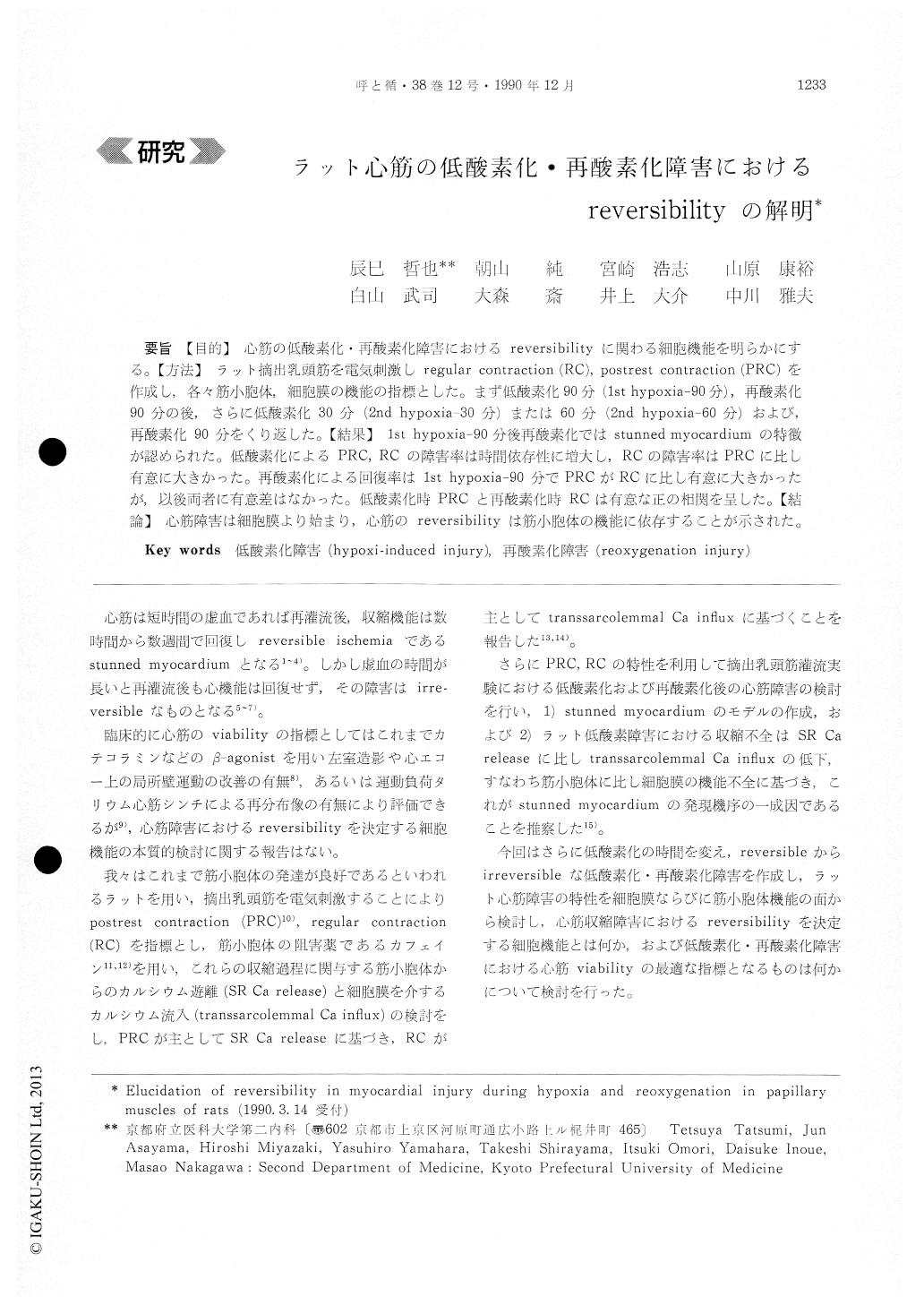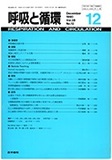Japanese
English
- 有料閲覧
- Abstract 文献概要
- 1ページ目 Look Inside
【目的】心筋の低酸素化・再酸素化障害におけるreversibilityに関わる細胞機能を明らかにする。【方法】ラット摘出乳頭筋を電気刺激しregular contraction(RC),postrest contraction(PRC)を作成し,各々筋小胞体,細胞膜の機能の指標とした。まず低酸素化90分(1st hypoxia−90分),再酸素化90分の後,さらに低酸素化30分(2nd hypoxia−30分)または60分(2nd hypoxia−60分)および,再酸素化90分をくり返した。【結果】1st hypoxia−90分後再酸素化ではstunned myocardiumの特徴が認められた。低酸素化によるPRC,RCの障害率は時間依存性に増大し,RCの障害率はPRCに比し有意に大きかった。再酸素化による回復率は1st hypoxia−90分でPRCがRCに比し有意に大きかったが,以後両者に有意差はなかった。低酸素化時PRCと再酸素化時RCは有意な正の相関を呈した。【結論】心筋障害は細胞膜より始まり,心筋のreversibilityは筋小胞体の機能に依存することが示された。
We reported the calcium release of sarcoplasmic reticulum (SR) is the major source of activator cal-cium to postrest contraction (PRC), and that the transsarcolemmal calcium influx is (the major source of activator calcium) to regular contraction in rats. In this study we investigated the combined effects of hypoxia and glucose elimination on PRC and regular contraction. In other words, using papillary muscles of rats, to elucidate the characteristics of reversible or irreversible myocardial injury after ischemia, we investigated the effects of hypoxia on both SR and sarcolemmal functions.
After 90 min hypoxia (the first hypoxia-90 min), regular contraction was significantly more reduced than PRC (p<0.001; n=16). With 90 min of reoxy-genation, the recovery from hypoxic injury of PRC was better than recovery from injury of regular contraction (p<0.01; n= 16). After either 30 min hypoxia (the second hypoxia-30 min) or 60 min hypoxia (the second hypoxia-60 min), regular con-traction was also more reduced than PRC, respec-tively (p<0.001; n=8). However, the recoveryfrom both the second hypoxic injury-30 min and the second hypoxic injury-60 min of PRC was not sig-nificantly different from that of regular contraction, respectively (NS; n=8). Percentages of diastolic tension, which were normalized by baseline regular contraction, increased during hypoxia and decreased incompletely after reoxygenation. After the first reoxygenation of 90 min, 1 μM noradrenalin signifi-cantly augmented the magnitude of regular contrac-tion (p <O.05; n=5). There was significant cor-relation between the potentiation of PRC during hypoxia and the potentiation of regular contraction after reoxygenation (the first hypoxia-90 min ; r= 0.62, p <O.01, n= 16 : the second hypoxia-30 min ; r= 0.77, p<0.05, n=8 : the second hypoxia-60 min; r= 0.95, p<0.001, n=8).
These results suggest that the SR is more resistant to hypoxia than sarcolemma, and that not only hypoxia but also reoxygenation is suspected to regu-late the recovery from hypoxic dysfunction. The major mechanism of stunned myocardium is based on sarcolemmal dysfunction, and irreversible dysfunc-tion of SR will induce an irreversible myocardial injury. In addition, the function of SR at hypoxia can predict the myocardial function after reoxyge-nation.

Copyright © 1990, Igaku-Shoin Ltd. All rights reserved.


